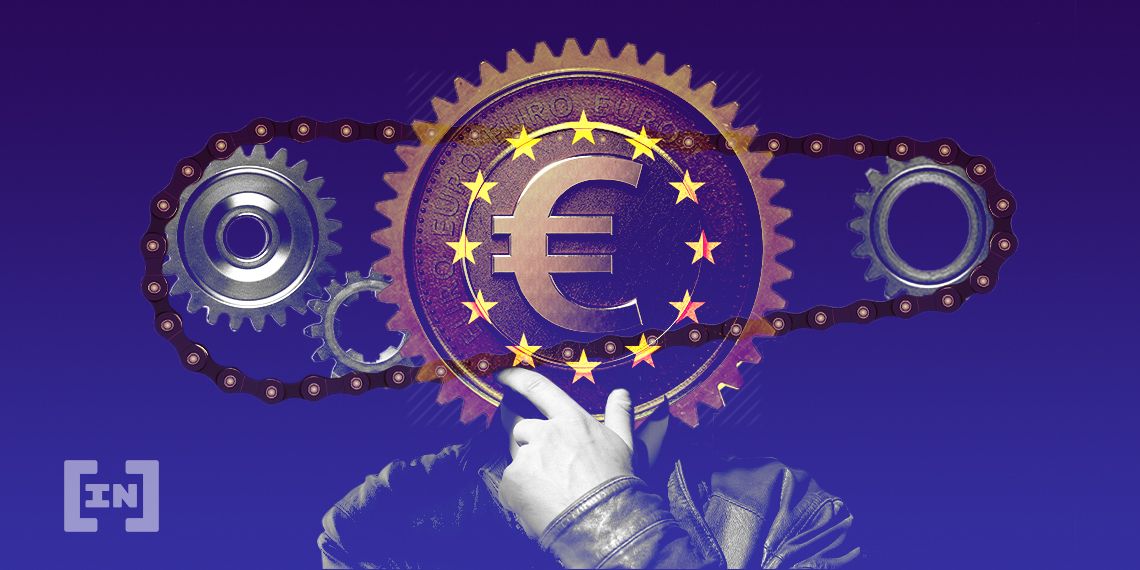BeInCrypto examines the state of crypto innovation and regulations in the EU and how the region navigates the emerging sector.
The world is on the cusp of a new era of technological interactions. Crypto and blockchain-based developments now appear in many facets of reality both inside and out of the traditional crypto space. Governments around the world are on track for the development of their own digital currencies, while considering new regulations. International companies reveal new crypto and blockchain protocol integration for widespread use.
In Europe, Member States and the Union itself have their own approaches to space. From regulations and crypto trends, to mining booms and startups, the European decentralized space is one to watch.
The EU: A market overview
According to a September report from Chainalysis, Europe is the world’s largest crypto market in terms of transaction activity. The report narrows the focus on the regions of Central, North, West Europe (CNWE). Over $1 trillion worth of crypto has flowed into this region over the last year, which caused it to move from its previous second-place ranking.
In addition, crypto-related activity declined in Asia. The ban of cryptocurrencies and mining in China gave way for other locations to move up on the leaderboard.
Two of the continent’s leaders in crypto activity are Germany and France, with transactions around $125 million and $115 million. Moreover, a large amount of crypto transactions across the continent were carried out via DeFi protocols. The Union’s DeFi activity continues to climb, especially as places like the U.S. tighten regulations.
However, with market growth and maturity comes the watchful eye of regulators. In Europe those with business to do in the crypto market have two layers of bureaucracy. The first is the crypto legislature in place from the European Union as a legal body. The second comes from national regimes of European member states.

The EU and crypto legislation – how it works
As the EU has a tiered system of legislation, the clarity of regulation can be murky. Florian Glatz, a blockchain lawyer and co-found of the EU Crypto Initiative, clarified the situation in the EU. His initiative specializes in crypto and DeFi education for legislators in the Union.
“When it comes to regulations of financial markets, which is the main area of interaction right now between crypto and regulation, this is mostly an EU topic,” he said. Therefore the Union’s preliminary actions on crypto set the stage for all 27 countries under its economic and political jurisdiction.
Member States cannot do much solely on their own without incorporation of the final EU legislation. “It’s an EU topic because the Union has harmonised this market already through the MiFID II regulation, which is essentially the European securities law.”
The way the EU can create acts is through both regulations and directives. “Regulations immediately make you think of a law,” said Glatz. “This is what’s coming with the crypto regulation,” which will be set out by the EU legislative body. “Directives, basically, are a specification for a law, which Member States will need to draft themselves in the national language, national legal system, and then transpose it into national law.”
Moreover, the regulation which is most important for EU crypto market interactions is the soon-to-be Markets in Crypto-Assets (MiCA). “This MiCA regulation is part of a complete finance package. It contains five or six different regulations and directives, and MiCA was one of them,” Glatz clarified. The goal of this package is to simplify rules, make the Union more competitive through tech innovation, all while protecting the consumer and financial stability.
MiCA
According to the EU, the MiCA has an aim to “harmonise the European framework for the issuance and trading of various types of crypto tokens as part of Europe’s Digital Finance Strategy”.
This new legislation covers cryptocurrencies such as bitcoin and ethereum in addition to stablecoins, which are a hot topic among global regulators. However it does include CBDCs or security tokens which can be classified as financial tools.
The MiCA proposes an overarching legal framework for assets, markets, and service providers. All of which are currently not regulated on an EU-level. Though to touch back on how tricky EU implementation is, the regulation, once adopted EU-wide will apply to all Member States. However the implementation thereof in national law will not be required.
In general Glatz, along with many others, believe regulation is good. “Regulation leads to consumer protection. Clear rules allow companies to be more successful really, which is a clear benefit.”
However he says, “the problem arises when this regulation inadvertently starts to touch on things it didn’t intend to really regulate. Moreover doesn’t have an idea of how to appropriately regulate. This is most pressing when it comes to decentralised use cases because decentralised use cases obviously don’t have this typical intermediary based structure. There’s also a range of spectrum of how decentralised something really is in the end. This MiCA regulation has no concept whatsoever to deal with any of those questions.”
Currently, Florian’s work with the EU Crypto Initiative aims to make a safe space for DeFi in Europe. However, one step at a time. “We try to convey that this is a new, innovative industry, DeFi, which doesn’t really work like other similar industries. Therefore it needs different oversight, different rules.”
A decentralized future
Given Europe’s position as a growing DeFi hub, these initial moments of regulation or lack thereof are critical to future innovation. Since the proposed MiCA legislation doesn’t do the DeFi industry justice, one option is to not include it for the moment.
“Our short term goal or initial need was to simply exclude decentralised use cases from that regulation,” said Glatz of the EU Crypto Initiative’s stance. However, in the future, the idea is not to exclude DeFi, rather provide a legal space for DeFi development.
“The next step should be some sort of ‘sandbox’. The idea would be to allow projects in Europe that want to do something of a more decentralised nature a place to experiment safely, without being overly concerned of doing something illegal.”
The initial financial package of which MiCA is a part included, “a pilot regime, as they call it, which is a fancy name for sandbox, for fully regulated market players to experiment with blockchain as a settlement system, in certain ways.”
“The EU was open to this experimentation idea,” said Glatz. “However, only for regulated players. What we’re asking is for an opportunity for the unregulated players, who are actually driving the innovation here. Learn with them, make them big. Even as a strategic move in Europe, make them big, and then tailor the regulation to reach the goals of the regulator while keeping those projects in place.”
Looking ahead
In the upcoming year the forecast for crypto in Europe certainly includes a degree of legislative clarity. Moreover, there will certainly be more involvement and support from EU institutions, especially as the EU develops its own blockchain network.
DeFi is also on the rise across the continent, especially with new projects like EuroSwap’s EDEX. This project is in response to the major increase in interest towards CBDC development, both from individual Member States and the Union. The European Central Bank is even considering a transeuropean digital euro.
However, the determining factor for many of these developments will come with implemented legislation. Glatz remarked that with the right type of regulation especially in terms of DeFi, Europe is in a good position.
“You know, I think Europe has a real potential to be one of the leading economic powerhouses in the crypto space. That’s the kind of thing we’re looking at.”
What’s your opinion on movement in Europe? Tell us here.
Disclaimer
Following the Trust Project guidelines, this feature article presents opinions and perspectives from industry experts or individuals. BeInCrypto is dedicated to transparent reporting, but the views expressed in this article do not necessarily reflect those of BeInCrypto or its staff. Readers should verify information independently and consult with a professional before making decisions based on this content. Please note that our Terms and Conditions, Privacy Policy, and Disclaimers have been updated.



